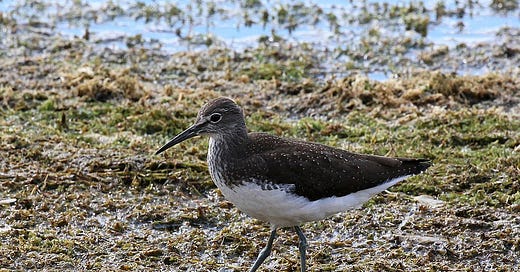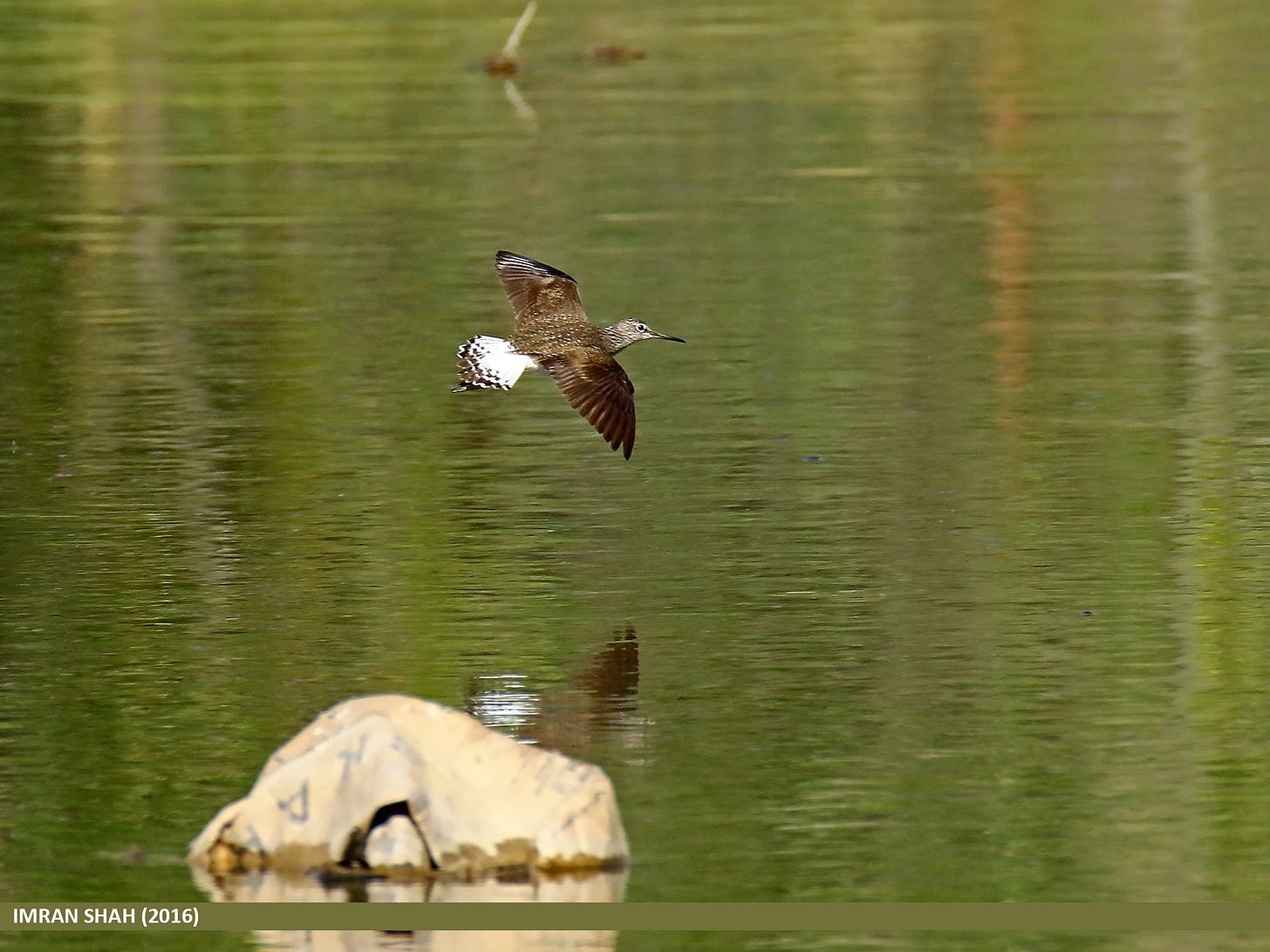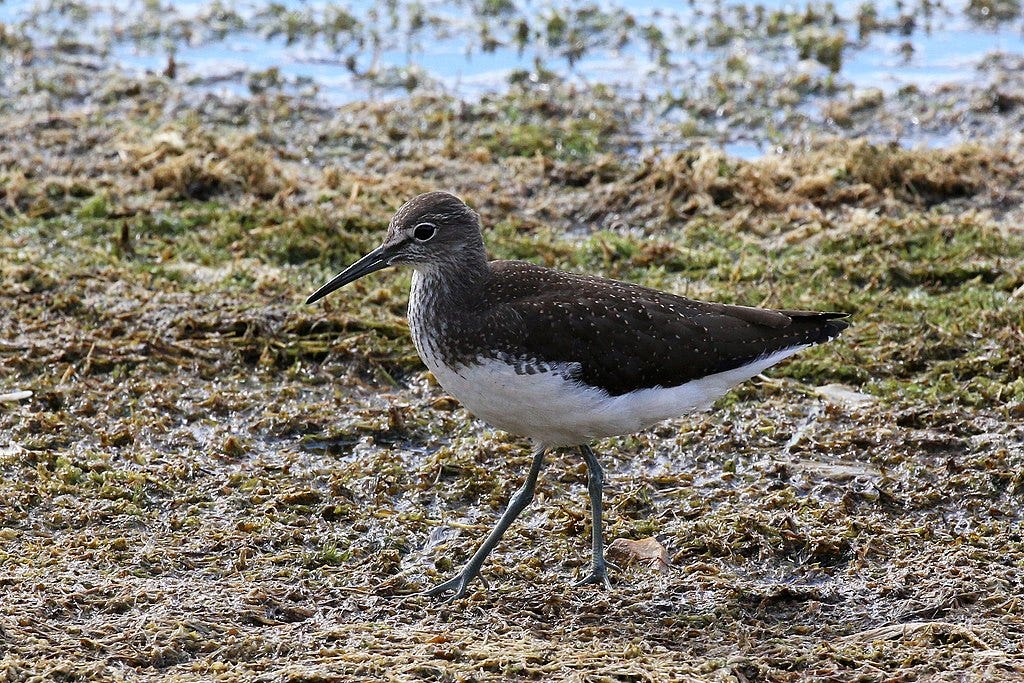Green sandpipers are not rare birds, but their habit of feeding discreetly around the smallest of muddy margins makes them easy to miss.
Nine times in ten, it’s their flight call that gives them away. It’s a loud, panicky chooweet or choo-wit-wit, repeated over and over, and getting quieter and quieter as they put distance between themselves and you.
Look around when you hear this sound - if you’re lucky you’ll catch sight of a small bird in rapid flight.
If the sandpiper is low enough you may notice the strong contrast between the dark wings and the bright white rump and upper tail, a bit like a house martin.
Green sandpipers hardly ever nest in Britain, with the vast majority of birds summering at higher latitudes. But birds are present on our shores most of the year in small numbers, and they are among the first autumn migrants to pass back south after the brief Arctic summer.
Like other waders they often migrate in the dark, and call frequently as they go, including over inland spots - don’t assume that this couldn't be over your street.
While the bigger congregations tend to be at large freshwater marshes, green sandpipers will make use of very modest soggy spots. You might be surprised by one at a farm pond, on an open flooded field or along an unremarkable-looking stream, including those with overhanging branches that other waders avoid.
In this last respect they are rather like teal, and the two species often lurk together in the same hidden spots.
It’s best not to underestimate how easily they can go unnoticed. Not long ago I lived in a landlocked village in Sussex where, just a few hundred metres from our home, was a string of overgrown ponds that was just to these birds’ liking.
This unpromising stretch turned out to be a regular winter haunt, not only of green sandpipers, but of teal, and kingfishers, and snipe. I began to check in regularly on a morning or evening’s walk. It felt miraculous that it was home to all these waterbirds in the midst of what was a largely waterbird-free landscape.
That sense of magic was deepened by the fact that I had managed to walk nearby for several years without realising that any of those birds were there.
Without the green sandpiper’s choo-wit-wit perhaps I would never have noticed at all.
Next week: Skylark
🔗 Link of the week
Bring Birds Back (podcast) - Reimagining Prison: Acoustic Birding and Sustainability is a look at a programme in the USA that trains people in jail to recognise bird calls and support acoustic monitoring programmes.
Thanks for reading Shriek of the Week. Emails will arrive less than weekly for most of July and for the rest of the year. Weekly output resumes in January, when we really need the birdsong again. In the meantime, check out the archive, and if you’d like to join me for some monthly live bird listening via Zoom you can become a paid subscriber for £25 a year, or £5 a month.
Enjoy the birds.
~ Charlie
Media credits:
- Green Sandpiper flight image by Imran Shah from Islamabad, Pakistan, licensed CC BY-SA 2.0, via Wikimedia Commons
- Green Sandpiper standing image by Charles J. Sharp, licensed CC BY-SA 4.0, via Wikimedia Commons





